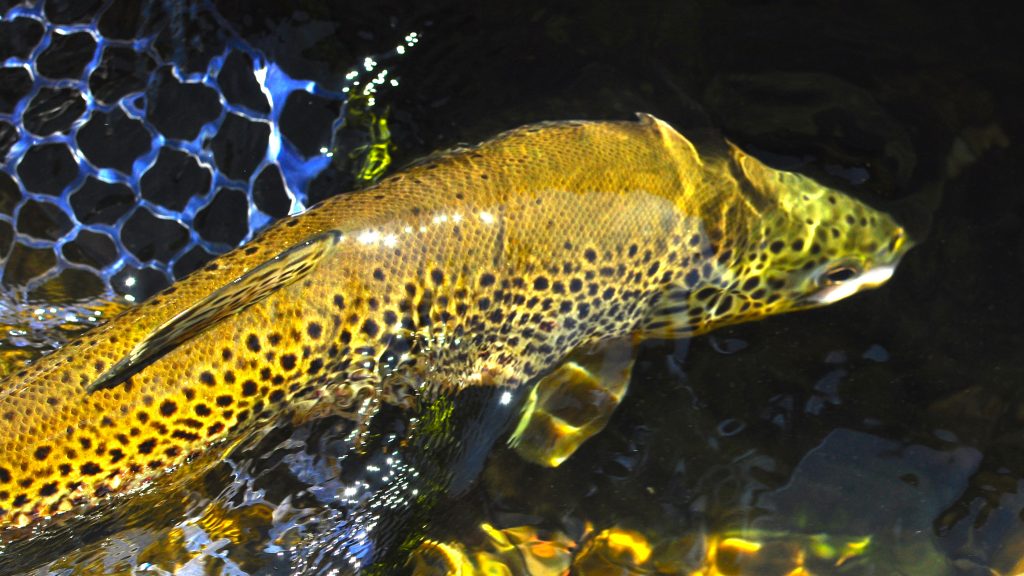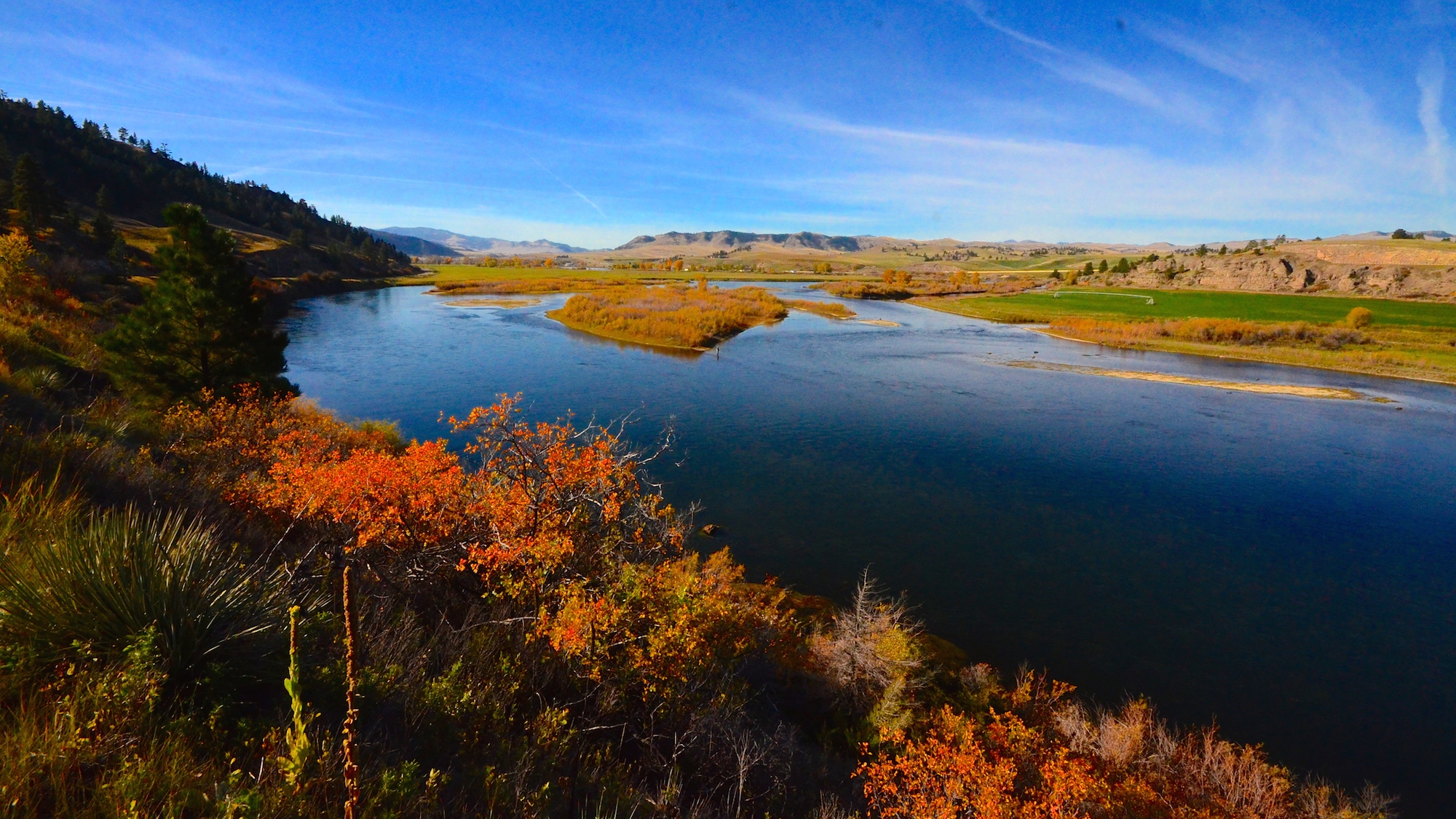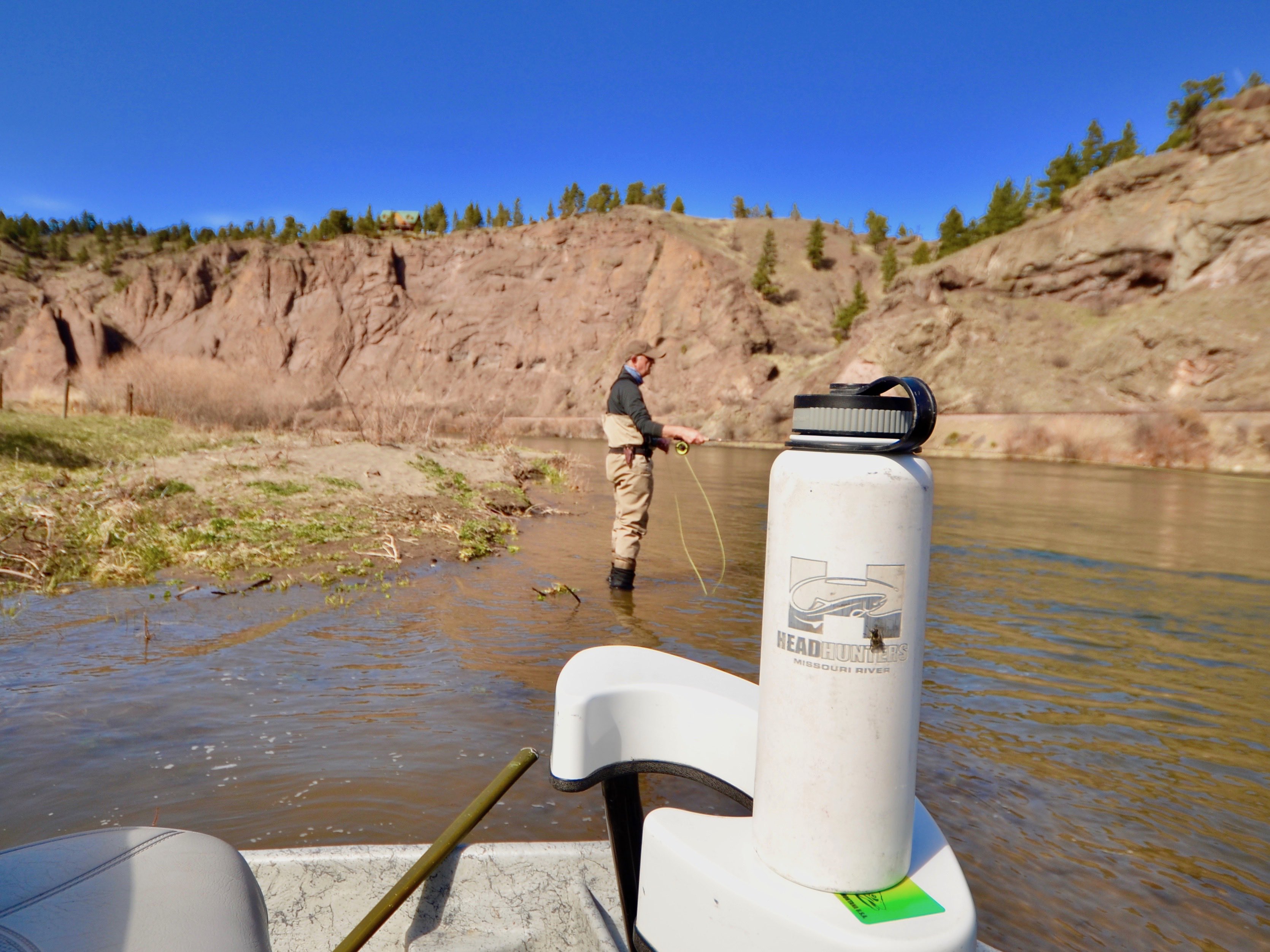How to Approach Like Pro
The number one reason that more anglers do not catch fish with a dry fly is because they do not approach rising fish in the proper manner. Most every angler (men) rush right in and foul it up. Are you familiar with the Old Bull, Young Bull parable? If you are, you know that rushing into any rising fish situation can lead to disaster. If you are not, you should probably look it up.
So how can you as an angler stay away from those Young Bull behaviors? Develop an approach that leads to dry fly success. The good news is that I will outline a strategy for you to increase your dry fly success.

How long would you stay around if a tree fell through your kitchen while you were cramming homemade smoked cheese stuffed bacon wrapped jalapeño’s?
I always approach the trout the same way. I repeat my behaviors every single time; just like watching a pro golfer approach his drive, a pro tennis player set up for a serve, a pro baseball player set up in the box. All have something in common: the approach is identical every single time.
My approach to every single trout is as follows. I think of it as Making a Small Business Plan for every fish. Everything I do goes into that business plan for action. A calculated plan for success.
Approach the Trout Softly
But that is commonly how we as anglers approach trout. We certainly do not give them as much respect as we would a pond of ducks. But we must realize that we are hunting wild trout and they are wild animals too and wild animals do not like predators. Not at all.
Approach the trout like you want to catch it. Quietly. Softly. Low profile. Drop your anchor, if in a boat, gently. Surgically. Do not bang around. Do not alert the enemy. The element of surprise never falls from favor.
Rising Trout are the Easiest to Catch!
That statement above I truly believe. The beauty of rising fish is that you get to see, witness, understand all of the variable. All of them. You get to see the fish rising. The location. You see the lane that the bugs are in, headed towards the rising trout. You see the fly pattern that you will fool him with. You see all of the variables. Nothing is secret here. So no need for guessing anything.
The angler should be close enough not requiring a 75′ cast. He ca see the fish rising. He can see the drift made to the trout. He can see everything. No secrets, no guesswork. AT ALL!

Don’t Rush!
The trout is rising. You can see him. He is showing himself. You do not have to rush into anything at this point. The best way to catch that rising fish is not to make a mistake early in the game.
Most make the mistake by casting at the fish and trying to fool him on the very first cast.
Usually the angler is close and is peeling line from the reel as the fly moves toward the rising trout. The angler is clearly not ready as he does not even have enough line off of the reel. The fly continues down the lane as the angler pulls even more line from the spool. The fly creeps into the trout’s eye he inhales it. What?!?! The angler wildly sets and misses the fish. Ahhh?!?! Then the angler tosses the fly into the back of the pool engaging yet another fish as he eats the wayward fly… followed by another freak-out by said angler coming up empty.
Or, the fish is alerted of predatory presence and leaves the area. That is what most commonly happens. Is that the angler has left himself with a trout that is either aware of predatory behaviors, or has shut down completely.
We have all seen that movie. No need to see it again. Never. But that is how many of us approach sipping trout. Over and over and over again. Baseball players bat for average. Sometimes they hit home runs. That is a difficult sport. So is headhunting. Why not see the similarities between any of the analogies listed above and get on board? Approach the same way every time.

Be Patient
A major league pitcher warms up before the opposing batter steps into the box. That is how we as anglers should approach a rising fish situation. I like to set up at the appropriate angle. We like to fish down and across on the Missouri, not upstream like one may in freestone situations. Then I watch the trout rising to see if he is locked into a specific spot or if he is wandering side to side. Is he eating on the surface or is he taking something below the surface? An emerger, a cripple, a dun? All three? Why not take a moment observing the trout’s feeding behavior or patterns. There is no rush. The trout is feeding. A marathon, not a sprint. Patience is imperative for long term success. The goal is to catch the fish. Right?
Watch the trout rise for a few minutes. More than 1 minute. Slow your heart rate down. Understand the rise form. Watch what is happening. Slow down.
Do you see a theme developing here? I bet you do. Patience. Move deliberately, remove the guesswork from the equation.

Make the Cast
Now you have the perfect amount of line off of the reel. Not too much. Not any extra. You do not need to pull line off of the reel as you drift. You have enough. You have measured the amount, the distance, the precise length of line that you need to make the perfect drift on the fish.
Ideally the trout eats the fly. If he doesn’t then you have to cast again. The beauty of this program is that you do not have to guess again. You never have to guess again, because you have already measured the perfect amount of line that you need. If you made the drift on the fish and he did not eat the fly, you simply strip in the amount that you have previously drifted.
For example, if you landed the fly two feet in front of the rising fish, then drift it four feet, meaning two feet beyond the fish, you simply strip in four feet of line and cast on the trout again. Perfectly. You already have that amount of line measured.
You do not shoot line. You have a static amount and you lay it right on the fish. If you do shoot line, it should extend flattening the line above the fish and landing precisely where you landed the last cast. Shooting line is inaccurate, so I advise using a static amount of line.
You measured it and you cannot make a mistake. You have the exact amount of fly line off of the reel. It is fail-safe! Honest. You do not have to guess. Dry fly anglers fishing at rising fish in a specific lane do not have to guess. You can see it all. It is happening in front of you. No guessing.

Then, repeat. This a tried and true method to catch more rising fish. Tailwaters, spring creeks, and your favorite stream all hold fish that are difficult to fool. I believe this is a fool-proof method.
You have to eliminate the number of ways you can fail.
It is important in every Small Business Plan. It should be in your business plan for every trout. Make that plan. Approach quietly. Understand the rise form. Cast near the fish, do your practice drifts, feel out the current line/lane. Measure the line, make the presentation cast, hook the trout. If not, repeat.
This methodology has come to me over the past 30 years on the Missouri River. It has come from fishing with many friends, colleagues, guides, and family. I did not learn this overnight. It took many years to develop this method. But you can execute this next time you find yourself in a rising trout situation.
Do it. Learn it. Approach trout like a pro! Catch more trout! Add your own twist to this and make it your own!







4 Comments.
Sometimes it helps to hear the full thought process. I have employed this method at times but without thinking through the steps I sometimes shoot line or flock cast to a pod of fish. Thanks for putting the steps in writing. It helps to be methodical when casting to rising fish.
Passion. As much as I appreciate and admire your efforts to teach and cultivate DF skills I think there is one thing that can’t be taught but can be cultivated. If you’re watching a major league ballgame and your mind is converting it to dry fly analogies, if you dream of moving water with circles, bumps, heads and noses in it, or if you feel the whole world and everything in it is merely a large elaborate backdrop for the dry fly fishing, well then you’ve got it, bad. The most benign madness I know. That insane dry fly passion. I’m sure you cultivate it when you find it. I’m not sure it could be instilled. So if you’ve got it you’ll eventually learn to throw those elegant drift free casts. If you don’t well then be relegated to fishing with a chunk of Brillo and two hunks of tungsten. Not that there’s anything wrong with that.
LT
Great post Mark – I have the most fun and hook more fish when I just slow down, relax but really focus – mentally amped for sure but controlled action. Force yourself to slow down but envision success in that next step ….a good read to a holding fish, a pattern that makes sense for the water you’re fishing, how you want that cast to move, hook set ect… .
Mark
Your post is great! It contains everything needed to think about to catch Mo river trout. You need to practice the thinking ahead of time along with the casting. I would like to say that Mo river trout have become tougher to catch on dry flies then they were 30 years ago. More anglers at popular times and less fish are the two main reasons. Proper fly choice is extremely important along with presentation as you emphasize.
Enjoying the fish you do fool is a big part of it also. I forget to do that after I do hook and release my fish. I just want to have the experience again as fast as I can! All in all a very comprehensive post to read and consider!!!